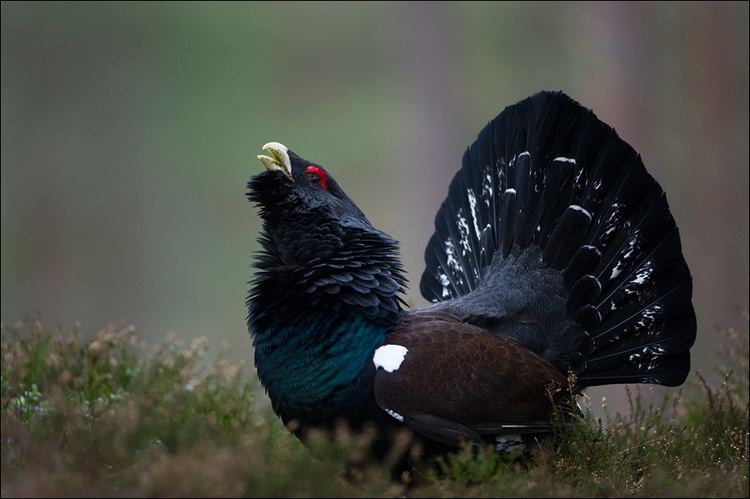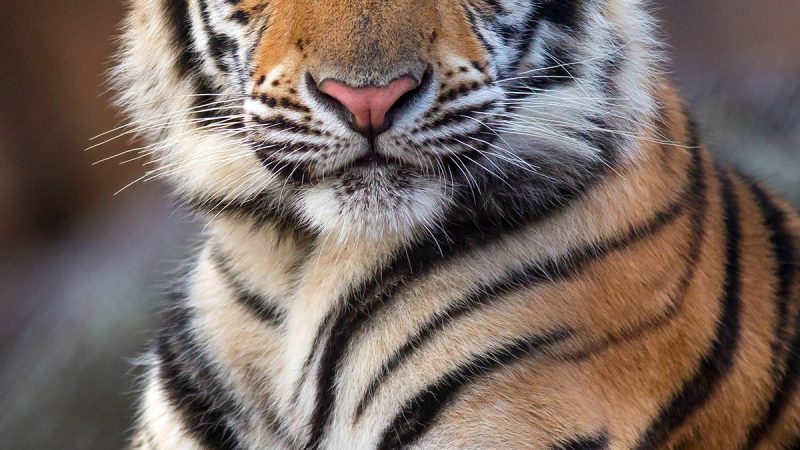In mature males, the predominant coloration consists of black and dark grey tones. The head and neck showcase a captivating blend of black and mid grey hues, while the back and rump adopt a dark grey shade. The upper wings exhibit a brown hue, while the tail is adorned with black and white speckles. The lower chest and belly display a rich, dark green gloss over black, accompanied by a conspicuous white spot on the shoulder. The unmistakable feature of a bright red wattle encircles the eyes. Notably, the chin and throat area boast spiky black feathers, resembling a beard. Female adults are comparatively smaller and flaunt a broad ginger orange chest with dark brown markings, interspersed with white patches on the flanks and belly, further embellished with brown and black bars.
During the breeding season, particularly when males engage in lekking (elaborate displays to attract females), a distinct courtship call resonates – a series of croaks, clicks, and a finishing pop akin to the sound of a champagne cork released from its bottle. Additionally, these males might emit crowing sounds reminiscent of pheasant calls.
In terms of diet, Western capercaillies predominantly feed on pine needles and berries, with a particular fondness for juniper, bilberry, and blackberry. They also incorporate herbs, grasses, leaves, shoots, and occasionally insects into their diet.
As residents, these birds primarily inhabit old pine forests or plantations. During winter, they forage in treetops, while the rest of the year sees them searching for sustenance on the ground, particularly in open marshland areas. The Spring season brings about the striking courtship display, wherein males showcase themselves in front of assembled females in a designated ‘lek.’ In this setting, they strut, call, and fan their expansive tails. While resembling the black-billed capercaillie, they share territories primarily in eastern and central Siberia. Their distinct size, plumage, and calls make Western capercaillies easily distinguishable.
Following a successful display or lek, females select their mates. Leks occur in woodland clearings, with around six to a dozen male birds performing and displaying from dawn onwards to captivate potential partners. Instances of over seventy displaying males in one gathering are not unheard of. Males often mate with more than one female, and nests are usually created in ground hollows concealed within dense cover. Between April and June, the female lays a single clutch, typically consisting of 5-9 pale yellow eggs adorned with rufous spots. The incubation period, conducted solely by the female, begins before all eggs are laid and spans up to twenty-nine days per egg. The fledging of the young occurs around three weeks after hatching.
The average lifespan of Western Capercaillies in the wild spans up to ten years, while those under captivity can endure for a considerably longer duration.










